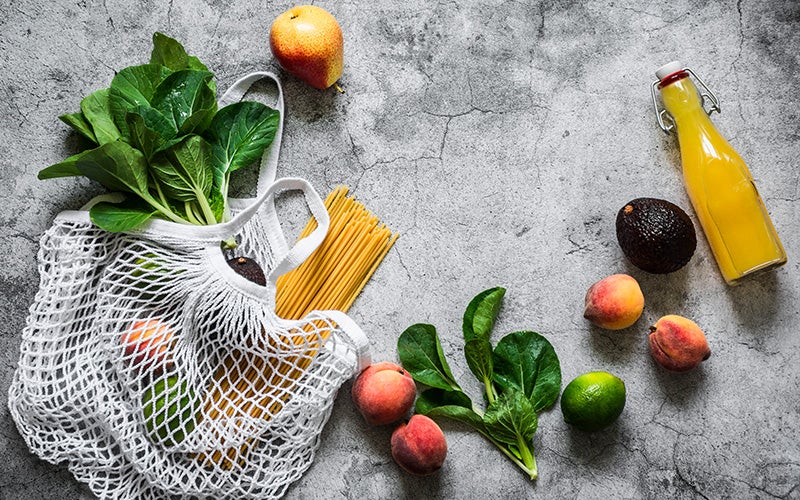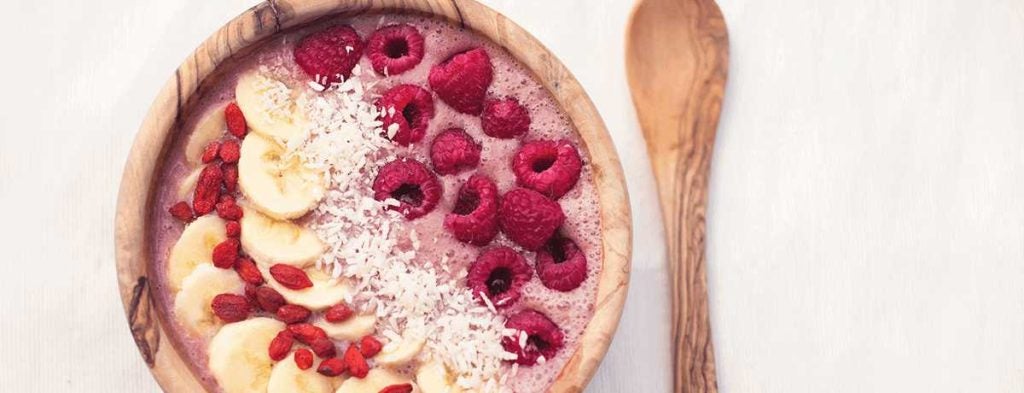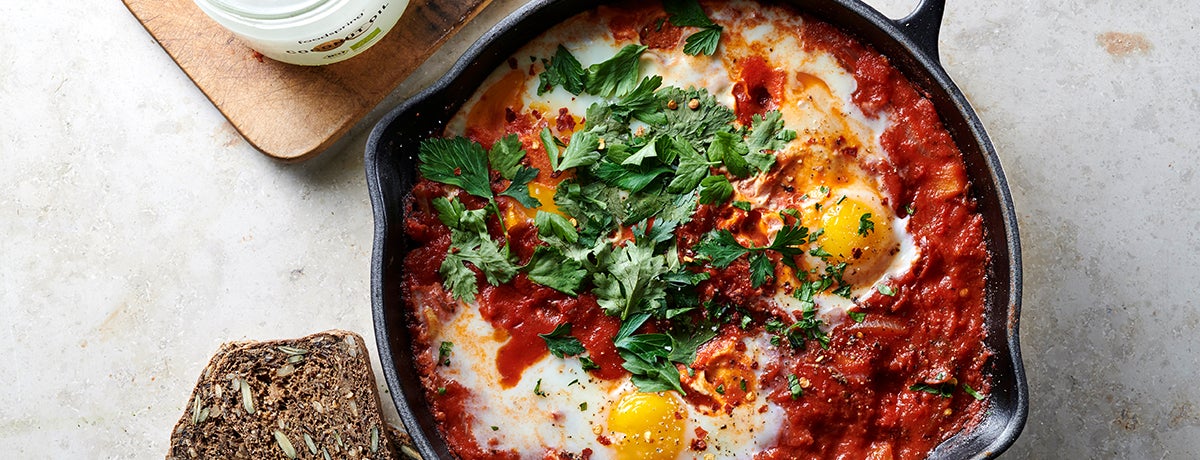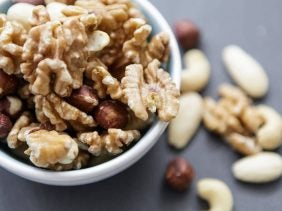Create your ideal weight loss meal plan and work towards your feel-good body!
 ©OksanaKiian
©OksanaKiian
The right nutrition plan is essential for anyone looking to reach their feel-good weight. But strict diets are full of forbidden foods, and that can lead to trouble. We’ll show you how to create your own weight loss meal plan and stay focused on what’s really important.
What Should I Eat for Weight Loss?
Many tips and tricks can help you lose weight, but it’s important to focus on a healthy diet and plenty of exercise. In principle, you can eat anything you want, even when you’re on a diet, because the most important thing is that you eat the right number of calories in total. Eliminating the idea of strict no-go foods helps you stick to your plan.
Because everyone has different preferences and eating habits, nutritionists create meal plans that look completely different for each person. Don’t worry, you won’t have to give up on your favorite snacks, and no one is going to force you to eat something you don’t like with the promise of fast weight loss! A customized nutrition plan will help you follow through on your meal plans so that you meet your calorie goals almost automatically. Of course, there are still some foods that are particularly good for weight loss and we’ve summarized them below:
High-protein foods
Include a serving of protein in every meal, and it will help keep you full longer. Protein comes from a variety of sources, both plant and animal:
- Proteins from animal sources include meat, fish, and dairy products. Lean meat and fish, such as chicken breast or cod fillet, are good for weight loss. Low-fat quark, eggs, and lean cheeses, like mozzarella and feta, are also delicious sources of protein.
- Plant-based protein sources are mostly nuts and legumes, including peas, soybeans, and lentils. Lots of plant-based dairy substitutes are also available now, such as soy yogurt or almond milk.
Whole-grain products
Proteins and vegetables have many benefits, but don’t limit yourself to them for every meal! Carbs are an essential part of a balanced diet for weight loss as well. Pasta, bread, rice, and potatoes are also quite tasty, so why go without? Up their nutritional value by looking for whole-grain varieties:
- Instead of traditional pasta, go for whole-grain varieties.
- Substitute brown rice for white rice.
- Pick whole-grain bread over white bread.
- Sub in sweet potatoes for ordinary potatoes.
Fruit and vegetables
Whether you want to lose weight with your meal plans or not – make sure you also have enough fruit and vegetables on your plate, because they are chock full of vitamins, minerals, and fiber. But which vegetables or fruits are the best? Trick question: they’re all equally good! And the more colorful they are, the better!
Our tip: Fruit and vegetables can fall by the wayside on a busy day. Make sure you get all your important vitamins anyway with our Daily Vitamins. Essential vitamins from fruits and vegetables, in vegan capsules, and with no artificial additives.
Unsaturated fats
Fat is an important part of a healthy diet even when your goal is to reduce your body fat percentage. Pay attention to the difference between saturated and unsaturated fats. Our bodies need a certain amount of healthy, unsaturated fats, which are mostly found in avocados, nuts, olive oil, and other vegetable oils. Just a small amount of these foods per day is enough to cover your fat requirements.
What’s the Best Breakfast for Weight Loss?
Start your day off on the right foot with a healthy and balanced breakfast! The question of what kind of breakfast is best is really a matter of taste. Some like it sweet, others savory. Either way your breakfast should keep you full all morning long.
These three delicious breakfast recipes are guaranteed to fit into pretty much all meal plans for weight loss.
Colorful smoothie bowls
Smoothie bowls have been a welcome addition to the breakfast table for some time now. This delicious breakfast meal is more than just a healthy trend. Because smoothie bowls are not only versatile, they also look fantastic: Try our Berry Smoothie Bowl for a feast for your eyes and your taste buds! Can’t find quark in your local supermarket? Use low-fat Greek yogurt instead!

Shakshuka
Prefer a hearty breakfast? Try our recipe for shakshuka! It’s a flavor-packed pan of poached eggs with fresh herbs and red bell peppers in a spicy tomato sauce. Add a slice of our fluffy Protein Bread for another solid serving of protein and high-quality carbs.

Chocolate filled pancakes
Have a bit of a sweet tooth? Then our chocolate-filled pancakes are just right for you and your diet plan. Pancakes help you start the day with plenty of energy and keep hunger cravings at bay until your lunch break. They’re especially creamy and chocolatey thanks to our rich and delicious Protein Cream filling.

Nothing hitting the spot for you? Sift through more delicious recipes and get some inspiration for your meal plans on our recipe pages. Whether you want to lose weight, build muscle, or just cook healthier food – we have the right recipe for every goal. Simple. Fast. Healthy. Delicious.
Find your new favorite recipe now
What Should I Eat if I Exercise and Want to Lose Weight?
Whether you exercise or not – a healthy and balanced diet should always be the basis for your nutrition plan. That means high-quality protein sources, complex carbs, plenty of fruits and vegetables, and healthy fats. If you do work out, however, your total number of calories per week can be increased. Because if you exercise a lot, your body also consumes more energy. To keep yourself from getting tired and weaker, and able to power through your training plan, you need to eat enough.
So, when you create your weight loss nutrition plan, you should also take into account if and how much exercise you do. The number of calories burned depends on the amount of exercise you do and how strenuous it is. But in general, the more you work out, the more calories you’ll need. The right diet plan can also increase your performance in your workouts. Protein, for example, helps your muscles grow.
Carb Timing
Eating carbs at the right time can also help you lose weight when you’re working out. Meal timing, especially the carb cycling variation, focus on making sure you get enough carbs before and after your workout, and more on training days than rest days.
Easy to metabolize carbohydrates are especially useful before working out, because they can be absorbed and put to use more quickly. They provide your muscles with plenty of energy during your workout. Appropriate snacks before training, so-called pre-workout meals, include a banana or a piece of whole-grain toast with nut butter.
After training, complex carbs are key to maintaining a long-term energy supply. They refill your empty energy stores and help your muscles regenerate faster. That’s why this is the moment when you can, and should, treat yourself to a hefty serving of carbs. A post-workout meal could be some brown rice with chicken and a vegetable garnish. Since you’re usually hungry after your workout anyway, eating that many carbs at this point in your meal plan shouldn’t be a problem at all.
How Do I Create a Nutrition Plan?
Just answer a few basic questions, and we’ll show you how to create your own nutrition plan for weight loss in three easy steps.
1. Set your goal and determine your calorie requirements
First of all, it’s important to define your goal. In this example that’s healthy weight loss. To lose weight, you need to be in a calorie deficit, which means eating fewer calories than you burn. We recommend a maximum calorie deficit of 300 – 500 calories per day. Calculate your individual calorie needs for free with our free body check. Macro distributions are also part of the calculator, so you can find out how many grams of carbs, fats, and proteins should be part of your meal plans.
For example, if you burn 2,000 calories a day and you want to lose weight, you should eat at least 1,500 calories a day, but stay below 2,000 calories. In this case, the recommended intake is about 1,700 calories. This moderate deficit means you’re not too restricted and can still achieve results quickly.
Side note: daily and weekly calorie needs
At this point it’s important to distinguish between daily and weekly calorie amounts:
Your daily calorie total is calculated from your maintenance calorie needs per day (in our example 2,000 calories) and your daily deficit (in our example, 300 calories). This results in a daily calorie total of 1,700.
Calculated on a weekly basis, that amounts to 11,900 calories. It’s always good to know your calorie total per week as well. If you exceed your daily calorie total one day, you can just eat fewer calories on another day and still stay within your weekly calorie allowance. That way you can stay flexible and still meet your goal.
2. Create a nutrition plan
The second step is about getting down to the nitty gritty. Create an empty table for a whole week. Plan three main meals (breakfast, lunch, dinner) and two snacks. The first column on the left should look like this:
- Breakfast
- Snack
- Lunch
- Snack
- Dinner
Put the days of the week from Monday – Sunday in the column headings. Finally, insert a line at the very bottom. That’s where you’ll enter the calories for each day. Including headings, you’ll need a table with 8 columns and 7 lines, or you can download our free nutrition plan template. It’s got dedicated spaces for you to enter your goal, your personal calorie requirements, and your amount of physical activity.
If dividing your calories into individual macros is too complicated for you, leave it out. It’s not strictly necessary to divide your diet into the individual macronutrients because you’ll still lose weight as long as you stick to your calorie requirements. But it’s still important to eat a serving of protein, carbs, and vegetables or fruit with every main meal.
3. Fill in your nutrition plan
Finally, fill in each day with different meals. Start with breakfast and work your way through to dinner. This can take some time, especially in the beginning. Because to do it precisely, you’ll have to calculate the calories for each food in each meal individually and then add them together.
To get started, weigh out all the ingredients as part of your meal prep and calculate the calories they contribute to 100 g of the respective recipe. The upside? You only have to do the calculation once! Cook the same dish more than once, and you’ll save a lot of time calculating the calories. In our recipes we’ve listed all the calories and macros for you. Alternatively, you can also take a look at our calorie chart which lists various foods and their calories.
Protein-rich snacks are an essential part of any plan to lose weight. They’re the best way to bridge the gap between two meals, because proteins keep you full the longest. Popular high-protein snacks include protein bars, hard-boiled eggs, cottage cheese, almonds, protein shakes, Greek yogurt, and rice wafers with thinly sliced chicken breast.
Sample day on a weight loss meal plan
No idea how a nutrition plan works? We’ll show you how to fill out your meal plan with this sample day. It starts with breakfast and goes all the way through to dinner with a total calorie intake of about 1,700 calories. For a more complete picture, we’re also including the different macronutrients. Check out our free PDF for a fuller picture!
| Breakfast | Protein Porridge with Banana | 332 cal
20g protein 11g fat 43g carbs |
| Snack | foodspring protein Cookie | 227 cal
13g protein 6g fat 23g carbs |
| Lunch | Protein Pasta with Chickpeas | 538 cal
50g protein 11g fat 50g carbs |
| Snack | 1 apple | 56 cal
0g protein 0g fat 14g carbs |
| Dinner | Herring and Potatoes | 564 cal
35g protein 38g fat 20g carbs |
| Macros in total | 1,717 cal
112g protein 66g fat 150g carbs |
Different Nutrition Plan Variations
Need a bit more inspiration to get started with your weight-loss plan? Wondering which recipes are appropriate for meal prep? Or do you need tips for a lactose intolerance diet or vegan meal plan? Check out our articles for more specific tips on following more restrictive diets and recipe recommendations that will fit into your nutrition plan.
Ketogenic diet plan
A ketogenic diet is a low-carb diet that makes use of ketosis to help your body burn fat. Check out our interview with natural bodybuilder Oliver Hilden for a personal perspective on this diet and a selection of keto-friendly recipes, with all the information about calories and macros you need to put them into your meal plan.
Click here for more on the Ketogenic diet
Vegan nutrition plan
Want to create a vegan diet plan as part of your healthy, plant-based life? It’s easy with our recipes! Search for the meal type you need and click on vegan to see the best of what our fitness experts have developed. And our article on veganism helps you navigate some of the most common myths about this lifestyle. So you can stop worrying about eating nothing but brown rice!
Low-sugar meal plans
Maybe you don’t need to have a comprehensive nutrition plan with complicated meal prep to get started with weight loss. Sometimes it’s enough to just start eating less sugar. Use our recipe database to get started with some lower sugar or sugar-free recipes at your next meal. Or just substitute xylitol into your favorite recipes to cut calories without giving anything up!
Search for lower-sugar recipes
Our Conclusion
A nutrition plan can help you lose weight. It’s a good introduction to a healthy and balanced diet and helps you be more aware of what you eat.
It’s important to incorporate a calorie deficit into a nutrition plan for weight loss. We recommend a maximum calorie deficit of 500 calories per day.
Determine your maintenance calories first, then your daily calorie amount, and finally fill out your meal plan. Or use our template to get started.
Make sure that your meals consist of a serving each of protein, complex carbs, and vegetables or fruit.
Sources for this article
We at foodspring use only high-quality sources, including peer-reviewed studies, to support the facts within our articles. Read our editorial policy to learn more about how we fact-check and keep our content accurate, reliable, and trustworthy.
- Bundesministerium für Bildung und Forschung, at: https://www.gesundheitsforschung-bmbf.de/de/gutes-fett-schlechtes-fett-8035.php
- Journal of the International Society of Sports Nutrition. Volume 4, Article number: 8 (2007), at: https://jissn.biomedcentral.com/articles/10.1186/1550-2783-4-8






















